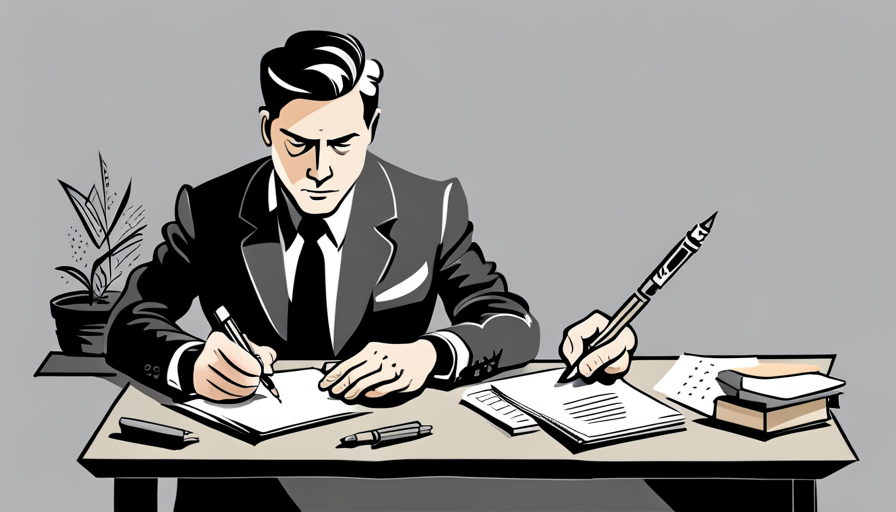Do you ever feel like you’re drowning in a sea of information during meetings or lectures? It can be overwhelming to try and capture every detail, especially when you’re trying to keep up with a fast-paced speaker or presenter. Taking effective notes is a crucial skill that can help you retain information, stay organized, and ultimately, be more productive.
In this article, we’ll give you tips and tricks for taking notes faster and more efficiently, so you can focus on the most important information and leave the rest behind like a swimmer shedding their waterlogged gear.
Note-taking is like trying to catch a wave – you need to be quick, agile, and strategic. But unlike surfing, where you can only catch one wave at a time, note-taking requires you to capture multiple pieces of information simultaneously.
Whether you’re a student, a professional, or just someone who wants to improve your memory and productivity, learning how to take faster notes is a valuable skill that can set you apart from others. By utilizing shorthand techniques, focusing on key information, and using technology to your advantage, you’ll be able to take notes like a pro and keep your head above water.
So grab your pen and paper (or open up your note-taking app), and let’s dive into the world of rapid note-taking.
Key Takeaways
- Preparing beforehand and managing time well are essential strategies for taking notes faster.
- Shorthand techniques like abbreviation methods and note-taking symbols can help take notes more efficiently.
- Focusing on key information and being selective about what to put in notes is important.
- Utilizing digital tools like note-taking apps and voice recognition software can maximize productivity and minimize effort.
Prepare Beforehand
Before you start taking notes, make sure you’ve got all your materials ready to go, just like how a sprinter prepares before the race. Note-taking strategies require you to be prepared beforehand.
Make sure you have a pen, paper, or your device ready to take notes. Familiarize yourself with the topic or subject matter so that you’ll have an idea of what you should be taking down. This will save you time and effort, and you’ll be able to take note of the essential information.
Time management techniques are also crucial when preparing for note-taking. If you have a busy schedule, plan ahead and dedicate a specific time for note-taking. This will help you avoid cramming and rushing, which can lead to taking incomplete or inaccurate notes.
By having a plan and sticking to it, you’ll be able to take notes more efficiently and effectively. Preparing beforehand and managing your time well are just some of the essential strategies you can use to take notes faster.
Use Shorthand Techniques
To be more efficient when jotting down important information, try using shorthand techniques like abbreviation methods and note-taking symbols. These techniques will help you keep up with the speaker’s pace, even if you’re not a fast writer.
Abbreviation methods are a great way to shorten words and phrases, making it easier to write down more information in less time. For example, instead of writing out “approximately, “you can simply write “approx. “Using abbreviations like this can save you precious seconds during a lecture or meeting.

Note-taking symbols are another shorthand technique that can help you take notes faster. These symbols can represent a variety of things, such as a checkmark for important information or an exclamation point for something that needs to be followed up on later. By using symbols like these, you can quickly scan through your notes and find the most important information without having to read through everything.
With a little practice, you’ll be able to use these shorthand techniques to take notes faster and more efficiently than ever before.
Focus on Key Information
Hey, you can easily improve your note-taking skills by focusing on the most important information. Active listening is key to this technique.
When you’re in a lecture or meeting, listen carefully to what the speaker is saying. Take note of any points that are emphasized or repeated, as these are likely to be important. Don’t write down everything – instead, be selective about what you put in your notes.
Another helpful technique is to use mind mapping or summarizing. Instead of writing down full sentences, try to capture the main ideas and organize them visually on the page. This can help you to see connections between different pieces of information and remember them more easily. You can also use abbreviations or symbols to make your notes more concise.
By focusing on key information and using these techniques, you’ll be able to take notes faster and more effectively.
Utilize Technology
If you want to maximize your productivity while minimizing your effort, it’s time to start utilizing digital tools in your note-taking process. With the advancement of technology, there are now numerous apps and software available that can help you take notes faster and more efficiently.
Some popular note-taking apps include Evernote, OneNote, and Google Keep. These apps allow you to create digital notebooks, organize your notes, and easily access them from any device.
Another useful technology to incorporate into your note-taking process is voice recognition software. This can be especially helpful if you find yourself struggling to keep up with a fast-paced lecture or meeting. Voice recognition software, such as Dragon NaturallySpeaking, allows you to dictate your notes, which are then transcribed into text.
This not only saves you time but also allows you to capture more information accurately. By utilizing digital tools and voice recognition software, you can take notes faster, more efficiently, and with greater accuracy.

Review and Revise
Now that you’ve captured all the important information, it’s time to go back and review and revise your notes to ensure accuracy and completeness. This is where note-taking strategies and the importance of organization come into play.
Reviewing your notes helps you to identify any gaps or inaccuracies in your understanding of the material while revising helps you to make your notes more organized and easier to understand.
One effective note-taking strategy is to use symbols and abbreviations to save time and minimize the amount of writing you need to do. For example, you can use an arrow symbol to indicate cause-and-effect relationships, or an asterisk to indicate important points.
Another strategy is to use headings and subheadings to organize your notes by topic. This makes it easier to find information later on and helps you to see the big picture of the material you are studying.
By reviewing and revising your notes, you’ll be better prepared to retain the information and apply it in your studies or work.
Conclusion
Focus on key information by identifying the main points, supporting details, and examples. Utilize technology like note-taking apps or voice recorders to help you capture important information. Finally, always review and revise your notes to ensure accuracy and completeness.
By implementing these strategies, you can take faster and more effective notes. Remember, practice makes perfect. The more you use these techniques, the more natural and effortless note-taking will become.
So, start implementing these tips today and transform your note-taking skills into a superpower!
